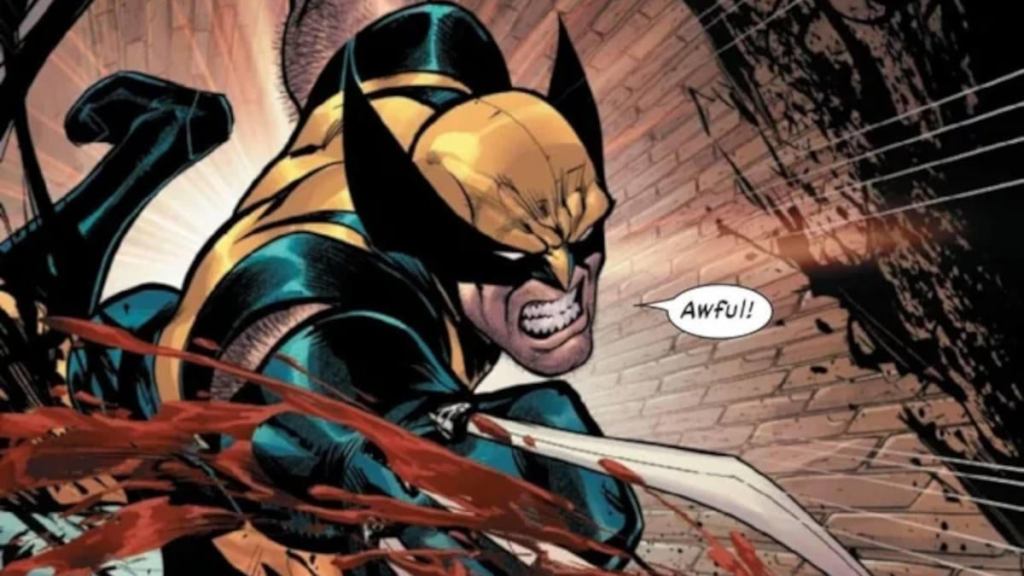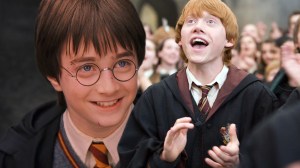Krakoa’s end begins in Fall of the House of X , the start of one of two miniseries with titles designed to form symmetrical bookends with the that began the era. Beyond the title, Fall of the House of X bears little resemblance to House of X, which debuted to fever-pitched excitement and slowly laid out its mysteries as readers tried to puzzle it all together ahead of time. Fall of the House of X immediately feels less trusting of its readers, opening with Scott Summers’ dream sequence, helpfully visualizing every anxiety that Cyclops feels on the eve of his trial, leaving little to be inferred or imagined.
Videos by ComicBook.com
The trial of Cyclops is the centerpiece of Fall of the House of X #1. It sees Cyclops accused of a long list of crimes with little real-world legal definition, as far as I can tell, to which Cyclops offers no defense. Instead, he chooses not to engage, his passivity a supposed act of “resistance” against the “fascists” arrayed before him, both words rendered weightless by their casual overuse in a play for relevance in the X-Men issues leading up to this. It’s hard to think of a better representation of what writer Gerry Duggan has cast the X-Men to represent during his run on the flagship title than their leader framing an act of surrender as a symbolic gesture of resistance performed before an institution that remains indifferent to his and his people’s plight.

Fall of the House of X carries a whiff of nostalgia. The X-Men seen in action are almost entirely those considered to be among the group’s core members for decades. Where House of X cast mutants as a nation and a people, even eschewing the X-Men as a superheroic team concept for a time, here we are again following Wolverine, Kitty Pryde, Colossus, Nightcrawler, Gambit, and Rogue, all decked out in costumes from the 1970s and 1980s. There’s even a flashback to that bygone era, which only emphasizes this group’s standing as the “primordial” mutants.
It feels like a contraction, or worse, regression, a return to a predetermined status quo. That back-peddling is even present in the characterizations and dialog, with Duggan employing stilted dialog in what feels like an attempt to evoke the memory of Chris Claremont’s purple prose. Wolverine is written as his basest self, a murder machine, ignoring decades of character development. The Cyclops-Jean Grey relationship, which has been central to Duggan’s run on X-Men and one of the longest-running narrative threads in the X-Men’s 60-year history, remains as central to Fall of the House of X‘s narrative as Cyclops’ trial.
Lucas Werneck’s artwork does the job but underwhelms in spots. The blend of photo-referenced background behind a drawn-in crowd outside of the Paris courthouse creates an uncanny effect, and a wry smile given by Cyclops at one point appears almost inhuman. However, outside of the awkward text placement on a double-page spread creating confusion, the book flows nicely, and the intimate face-to-face between Cyclops and Dr. Gregor hits the right beats.
However, that sequence may set off warning bells in readers’ minds. Setting aside the ill-defined reason for the meeting (Omega Sentinel says she’s not sure why she’s there, and a reason never emerges), it sees Cyclops trying to find common ground with Dr. Gregor as two people grieving the loss of their respective spouses. He makes a similar, if less specific, overture towards Omega Sentinel, asking what she expects to happen next if the humans are victorious. It foreshadows the “First they came …” appeal embedded in the statement Cyclops has his lawyer release following his conviction. The Krakoan age began with mutants divorcing themselves from concern for the human resentments they had previously indulged. Now, it seemingly ends with them appealing to the sympathy and self-preservationist instincts of their oppressors.
Finding an ending to the Krakoan age that would satisfy its fans, many of whom would have been happy to see this remain the X-Men’s indefinite state of being, was always going to be challenging. Readers may have gritted their teeth and braced for tragedy. A tragic ending may have been preferable to what Fall of the House of X #1 offers, an uneven story where a showdown between Nimrod and Krakoa, opposing avatars of the mutant-human conflict, is written off in a single page with a farcical tone, and the fate of mutantkind may hinge on the sudden moral awakening of those among their genocidal opponents.
They say you can’t go home again. After reading Fall of the House of X #1, it feels like Marvel and the series’ creative team may be poised to test that maxim, clumsily stumbling all the way back to Xavier’s front door.
Published by Marvel Comics
On January 3, 2024
Written by Gerry Duggan
Art by Lucas Werneck
Colors by Bryan Valenza
Letters by Travis Lanham
Cover by Pepe Larraz and Marte Gracia









